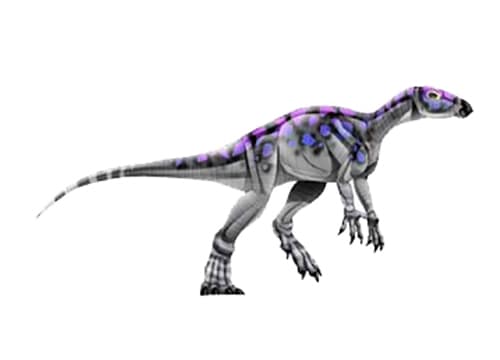Bugenasaura


Name: Bugenasaura
Pronounced: bug-en-oh-sour-a 
Meaning: large-cheeked lizard
Type: Small Theropod
Length: 3 meters long
Diet: Herbivore
Period: Late Cretaceous
Years: 70 million years ago
Location: USA
Description: Bugenasaura is a genus of ornithopod dinosaur that lived during the Late Cretaceous Period, about 72-66 million years ago. It was a small to medium-sized herbivore, with an estimated length of about 6-9 feet and a weight of about 50-100 pounds. Bugenasaura had a long, slender neck and a small head with a beak and small, peg-like teeth. It also had a long, whip-like tail, which it may have used as a weapon to defend itself against predators. Its body was probably covered in a layer of tough, scaly skin. Bugenasaura was discovered in Montana in the 1990s, and was named by paleontologists in 1998. It is considered a member of the iguanodontian group of ornithopods, which also includes species such as Camptosaurus and Dryosaurus. Bugenasaura is known from a number of well-preserved fossil specimens, including several partial skeletons and skulls, which have helped paleontologists learn more about the anatomy and behavior of this dinosaur. It is thought to be closely related to other iguanodontians such as Camptosaurus and Thescelosaurus.
Loading images from Wikipedia
Loading a Random Dinosaur...


